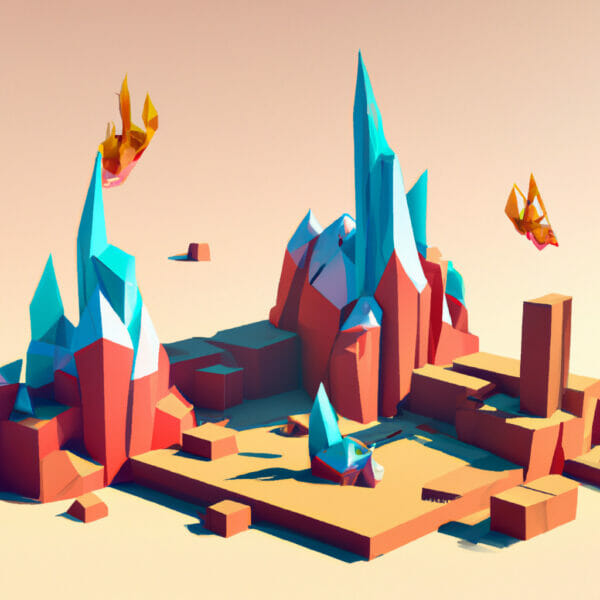With the never-ending evolution of gaming platforms and the surge in their popularity, Roblox emerges as a powerful and widely-used platform that allows gamers to create their personal virtual universes. As a user, not only can you design your own 3D worlds but also code game elements using the Lua programming language. This is where today’s subject of discussion, Roblox optimization, comes into play.
Table of contents
What is Roblox Optimization?
Put simply, Roblox Optimization is the process of refining game elements to ensure they run smoothly and efficiently on the Roblox platform. This can range from optimizing textures and models to ensuring your game code runs as efficiently as possible.
Why is Roblox Optimization Important?
The benefits of mastering this game-enhancing skill are multifold.
- Firstly, the better optimized your game is, the smoother the gameplay will be across different devices. This enhances end-user experience substantially.
- Secondly, with fewer issues and crashes, your improved game stability can help retain users and even bring in new ones.
- Last but not least, well-optimized games are more likely to get higher ratings and reviews, thus increasing their visibility.
With an understanding of ‘what’ and ‘why’, let’s embark on the journey to see ‘how’ Roblox optimization is done practically.
Reducing Part Count
The first element to consider for Roblox optimization is minimizing the number of parts used in the game. While simple, this is a highly effective method of enhancing your game’s performance.
Consider a game that has a set of similar buildings. Instead of creating each building individually with multiple parts, we could use a single part for each building and just change its texture.
-- Create part
local part = Instance.new("Part")
-- Set properties
part.Name = "Building"
part.BrickColor = BrickColor.new("Bright red")
part.Size = Vector3.new(10, 20, 10)
-- Positioning part
part.Position = Vector3.new(0, 10, 0)
-- Setting parent to workspace
part.Parent = workspaceOptimize Textures
Next, let’s shift focus to textures. Having highly detailed textures can make your game look visually impressive, but they can also slow down the performance substantially, especially on lower-end devices. Therefore, optimizing them can lead to substantial performance improvement.
-- Create decal
local decal = Instance.new("Decal")
-- High resolution texture
decal.Texture = "http://www.roblox.com/asset?id=12345678" -- replace with your image asset id
-- Lower resolution alternative
decal.Texture = "http://www.roblox.com/asset?id=87654321" -- replace with your lower resolution image asset idOptimizing Scripts
Another key factor for optimizing Roblox performance is scrutinizing your scripts. Ensure that the Lua code is efficient and not overloading system resources with unnecessary instructions.
For instance, using a while loop in an inefficient way can severely impact game performance. Let’s look at an optimized and non-optimized version of a loop in Lua:
Non-Optimized Loop:
-- Non-optimized loop while true do --This code will run continuously slowing down system performance end
Optimized Loop:
-- Optimized loop while wait(1) do -- Code will run every 1 second easing strain on system end
Utilize Level of Detail
Lastly, utilizing Roblox’s built-in Level of Detail (LoD) feature can dramatically improve performance, especially for larger games. This feature lowers the detail of in-game objects at farther distances, hence freeing up resources.
-- Set LoD
game:GetService("Workspace").Terrain.LodDistance = 25 -- You can adjust the value to suit your needsIn conclusion, small adjustments and optimizations can make a huge difference in game performance. By considering the part-count, optimizing textures, creating efficient scripts, and applying robust features like Level of Detail, we can effectively optimize games on Roblox platform. Practice these skills to ensure a smooth and enjoyable gaming experience for your players.
Managing In-Game Physics
The physics settings in your game can have a major impact on performance. Properly adjusting physics-related settings will significantly optimize your game.
Deactivate Parts:
One way to ensure optimization is to deactivate parts that don’t need physics simulations. Here’s how you do it:
-- Create part
local part = Instance.new("Part")
part.Parent = workspace
-- deactivate physics
part.Anchored = trueManipulate Collision Settings:
Another performance booster can be your management of collision settings. Although Roblox’s physics engine handles collisions very efficiently, minimizing unnecessary collisions can further optimize your game.
-- Create part
local part = Instance.new("Part")
part.Parent = workspace
-- Ignore collisions
part.CanCollide = falseOptimizing Lighting
Optimizing your game’s lighting can also have a significant effect on performance. Here are a few recommendations:
Limit the number of dynamic lights:
Each dynamic point, spot, or surface light in your game will impact performance since lighting calculations are expensive. Limit the number of dynamic lights in your scenes.
-- Create part
local part = Instance.new("Part")
part.Parent = workspace
-- Add light
local light = Instance.new("PointLight")
light.Parent = part
-- Turn off light
light.Enabled = falseUse shadowless lights:
Shadows require extra calculations, so using shadowless lights where possible can provide a performance boost.
-- Create light
local light = Instance.new("PointLight")
light.Parent = workspace
-- Turn off shadows
light.Shadows = falseStreamlining Scripts
Effective script writing is another crucial part of game optimization. A few key points to remember include:
Avoiding unnecessary loops:
Loops can eat up processing time, so avoid loops where a single function call can do the job.
-- Inefficient loop
for i=1,10 do
print(i)
end
-- Efficient function call
print("1 2 3 4 5 6 7 8 9 10")Limiting Server-Client Communication:
Always aim to limit how much your client and server scripts are communicating with each other. Excessive communication can clog up network traffic and cause lag.
-- Limiting Server-Client communication local function doSomething() -- do something end -- Instead of calling this function repeatedly, call it once and store the result for future use. local savedResult = doSomething()
Understanding and applying concepts like these can make the difference between a mediocre game and something truly exceptional. Roblox optimization might seem complex, but with the right understanding and practice, you can use these strategies to your advantage to provide a seamless user experience.
Optimizing Audio
Audio sources can add immersion to your game. However, if not optimized well, they can take up unnecessary resources.
Limiting Number of Audio Sources:
Just like dynamic lights, each audio source in your game can impact performance. Limit the number of audio-emitting objects.
-- Create a sound
local sound = Instance.new("Sound")
sound.Parent = workspace
sound.Volume = 1
sound.SoundId = "rbxassetid://148641622" -- replace with your audio asset id
-- Play sound
sound:Play()
-- Pause sound when not in use
sound:Pause()Use Streaming:
Roblox allows sound assets to stream audio from the server. Streaming can be extremely efficient for longer audio clips.
-- Create a sound
local sound = Instance.new("Sound")
sound.Parent = workspace
-- Set sound to stream
sound.IsLoaded = trueOptimizing Network Performance
Network performance is a crucial element of online multiplayer games in Roblox. An efficiently-operating network reduces latency and improves the overall experience for gamers. Here are some scripting practices for improving network performance.
Use Remote Events:
When you want to send a message from the server to specific client(s), or the other way round, you could use Remote Events instead of Remote Functions. It’s a more efficient alternative.
-- Server script
local remoteEvent = Instance.new("RemoteEvent")
remoteEvent.Name = "RemoteEventExample"
remoteEvent.Parent = game:GetService("ReplicatedStorage")
-- Client script
local remoteEvent = game:GetService("ReplicatedStorage"):WaitForChild("RemoteEventExample")
remoteEvent:FireServer("Hello, server!") -- message to the serverMinimize Network Traffic:
Strive to keep your network traffic as minimal as possible. If multiple scripts need the value of a particular variable, consider having the server broadcast that value regularly rather than having each script request it on its own.
-- Server script
local players = game:GetService("Players")
local replicatedStorage = game:GetService("ReplicatedStorage")
local remoteEvent = replicatedStorage:WaitForChild("RemoteEventExample")
game:GetService("RunService").Heartbeat:Connect(function()
local data = {} -- gather necessary data
for i, player in pairs(players:GetPlayers()) do
remoteEvent:FireClient(player, data)
end
end)These are not exhaustive fixes. The principles of optimizing audio and network performance, just like other optimization strategies, require a deep understanding of the platform along with the creativity and intuition of the developer. Continue to explore and experiment with the Roblox Studio, seeking to create an optimal experience for every player.Indeed, Roblox optimization offers a vast array of techniques to master, each aimed at enhancing a player’s gaming experience. Diving into the specifics can not only refine your skill set but also open up a world of opportunities.
We, at Zenva, offer more than 250 programming and game development courses that range from beginner to professional level, each designed to boost your career potential. Our portfolio includes a unique collection dedicated to mastering Roblox development.
The cherry on top is our comprehensive Roblox Game Development Mini-Degree. It’s project-based and ranges from creating obstacle courses to FPS games and offers invaluable insights on multiplayer features, leaderboards, and monetization methods.
We’ve meticulously curated our courses to be up-to-date, flexible and inclusive, ready to cater to not just beginners but also to those who’ve already dipped their toes in the basics. With Zenva, the journey from beginner to professional is as engaging as it is rewarding. The learning path you embark on with us can lead you to exciting career openings or pave the way to start your own venture.
Conclusion
Optimizing your Roblox games is a challenging yet rewarding journey. The process involves careful attention to every detail, from textures and models to code and physics. However, the fruit of this effort is an enlivening, smooth gaming experience that can captivate players worldwide.
If you’re willing to deepen your Roblox knowledge or explore new dimensions in game development, visit Zenva’s complete, project-driven Roblox Game Development Mini-Degree. Here, your learning journey begins right from the basics and skyrockets to helping you master professional expertise with a practical, hands-on approach. Unleash your coding creativity with Zenva today and become a vital part of the game development community.
Did you come across any errors in this tutorial? Please let us know by completing this form and we’ll look into it!

FINAL DAYS: Unlock coding courses in Unity, Godot, Unreal, Python and more.







